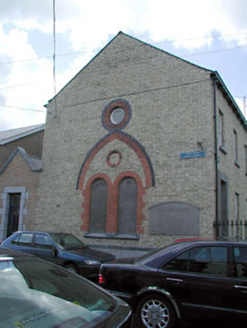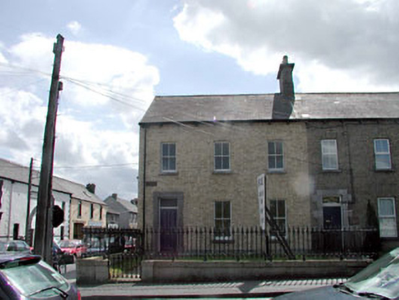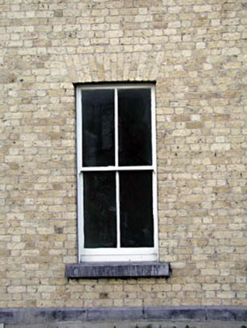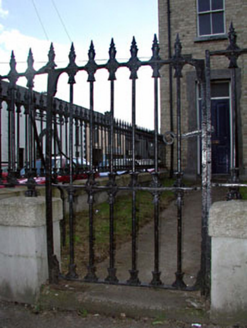Survey Data
Reg No
11818025
Rating
Regional
Categories of Special Interest
Architectural, Artistic, Historical, Social
Original Use
House
In Use As
Office
Date
1870 - 1890
Coordinates
280302, 215115
Date Recorded
17/02/2003
Date Updated
--/--/--
Description
End-of-terrace three-bay two-storey yellow brick house with dormer attic, c.1880, on a corner site retaining original fenestration with single-bay two-storey side elevation to south-east. Renovated, c.2000. Now in use as offices. One of a terrace of six. Gable-ended roof (shared) with slate (gabled to dormer attic window to pitch to south-west). Clay ridge tiles. Yellow brick chimney stack (shared). Profiled cast-iron rainwater goods on corbelled course to eaves. Yellow brick Flemish bond walls cleaned, c.2000. Yellow brick course to eaves. Cut-stone feature to side elevation to south-east. Square-headed window openings to front (north-east) elevation. Stone sills. Original 2/2 timber sash windows. Paired round-headed window openings to ground floor side (south-east) elevation. Cut-stone sills. Red brick block-and-start surrounds with red and vitrified grey brick lancet relieving arch over having round recessed panel to arch with red brick surround. Openings blocked-up, c.2000, and rendered over. Oculus window to first floor. Red brick surround. Fixed-pane timber window. Square-headed door opening. Cut-stone doorcase. Replacement timber panelled door, c.1960. Overlight. Set back from road in own grounds on a corner site. Sections of cast-iron railings to forecourt with finials.
Appraisal
This house, built as one of a terrace of six houses, is a fine and attractive substantial range that is of considerable social and historical interest, representing the development and expansion of Newbridge in the late nineteenth century with houses built by or for the prosperous merchant or professional class. The house is constructed entirely of yellow brick with some red brick dressings, which attests to the technological advances earlier in the century that allowed for the mass-production of economic building materials. The cut-stone doorcase is also an attractive feature, unusually profiled in an almost Egyptian style – the doorcase attests to the high quality of stone masonry traditionally practised in the locality. The house retains most of its original salient features and materials, including timber sash fenestration and a slate roof having cast-iron rainwater goods. The railings to the forecourt are of some artistic interest and are good examples of early surviving cast-iron work. The house, together with the remaining houses in the terrace (11818021-5/KD-27-18-21 – 5) is an important feature on the streetscape of Charlotte Street and forms the corner leading to Henry Street to the south-west.







